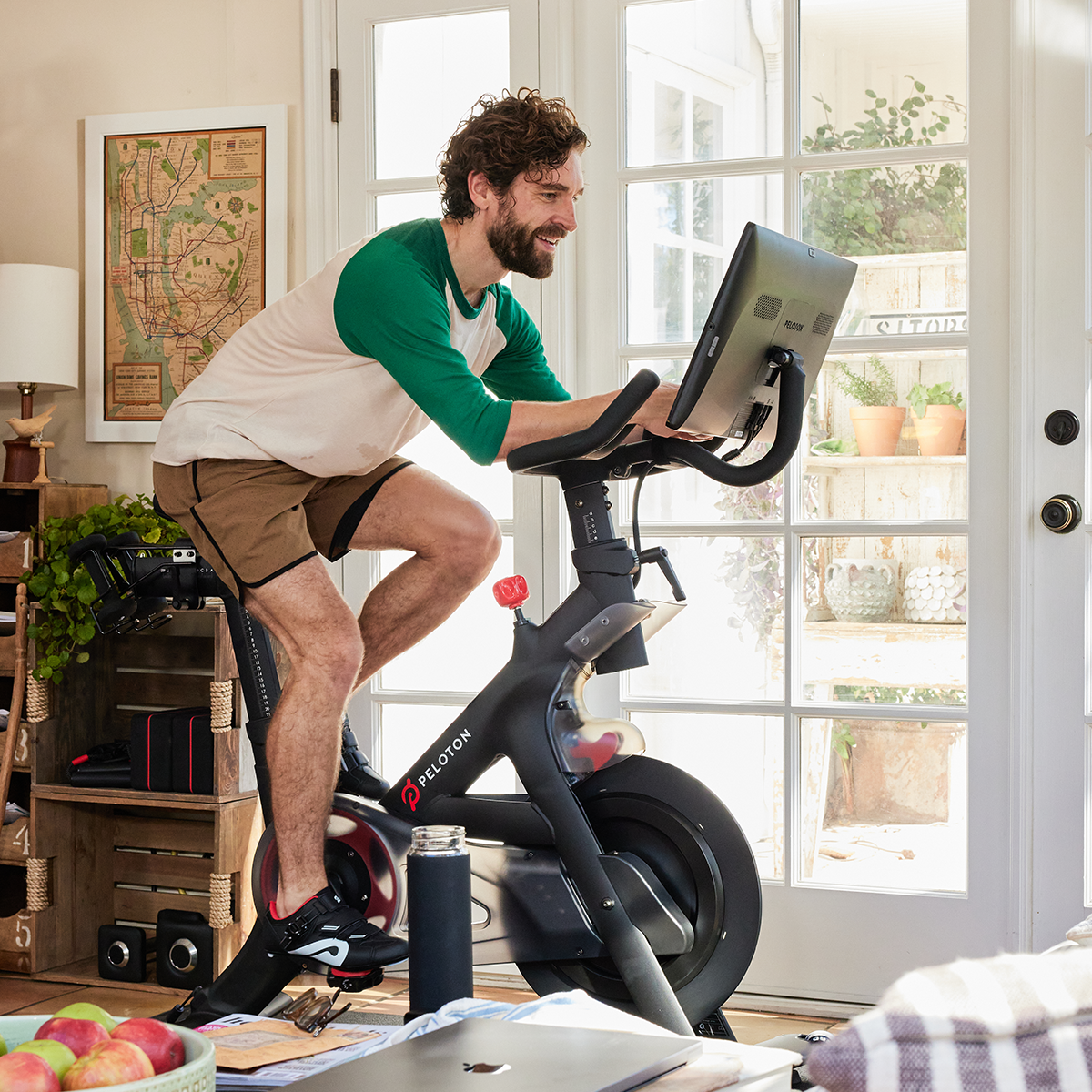We’ve all been there: Your Peloton Tread, Peloton Bike, or other workout of choice is calling your name—but then comes the flood of excuses. “I’m too tired.” “I’m too overworked.” “What’s the point? I haven’t hit a new PR in months!”
Why hello, brain! Thank you for the, uh, encouragement? We know it’s hard to shut that negative voice down, but thankfully, there are ways to develop a positive mindset that’ll help drown out the pessimism. Think of it this way: Harnessing a positive mindset is like strengthening a muscle. The stronger it gets, the better off you’ll be. For some tips on how to cultivate that mindset, we talked to Peloton instructor Jermaine Johnson and Lisa Richardson, MAPP, a positive psychology practitioner and researcher (as well as a proud Peloton Member).
How a Positive Mindset Helps
Having a positive mindset can benefit you in a lot of ways, including boosting your energy levels, keeping you motivated during a hard workout, and helping you persevere through challenges in pursuit of goals. Plus, Richardson notes, research has shown that we’re more likely to sustain a behavior when we prioritize positive thoughts and emotions. “When we experience a positive emotion, it broadens and builds our ability to experience more positive emotion,” she explains. “This upward spiral has been shown to be a positive influence in helping us to sustain a behavior—making us more likely to continue engaging in an activity like exercise.”
Keep in mind, however, that it’s not about dismissing all your negative emotions and forcing yourself to be happy all the time. Instead, it’s about self-compassion and self-care. “By pausing to create time for yourself,” Richardson says, “you are more likely to be prepared with the energy and outlook you need to navigate your day-to-day experiences.”
Shifting Your Focus
Too often, our motivation to work out is based on something negative, like what we ate for dinner last night or the way we think our bodies have to change. The key is recognizing those thought patterns—and then taking yourself out of them. Richardson suggests shifting your focus to positive emotions experienced during or after a workout, even if your initial motivation was negative. “For example, ‘I feel strong and grateful to move my body!’ or ‘I feel energized and proud after accomplishing that workout.’ These statements are more likely to help us show up for our next workout,” she explains.
Jermaine agrees, noting that these positive thoughts can make a big difference to the way you feel during class. “Thoughts become reality, so if you set a positive mindset before a workout, you are guaranteed to have a worthwhile session, which will in turn set you up for the day,” he says.
Prioritize Self-Care
Another way to lean into a positive mindset is to make self-care a priority in your routine. “We cannot pour from an empty cup. By practicing self-care, we’re building our capacity to show up in the world as the best version of ourselves,” explains Richardson. “Self-care can be misunderstood as being selfish or self-indulgent, but research on self-compassion shows those who regularly practice self-kindness and mindfulness are more resilient and more likely to engage in prosocial behaviors that benefit others.”
Richardson suggests carving out time to engage in activities both big and small that activate domains of well-being. “It could be pausing to take a look at the sky, laughing with a colleague or friend, or taking five or 20 minutes to move your body with Peloton,” she suggests.
And don’t forget that following a sustainable workout routine counts as self-care too, Jermaine notes. “Routines help turn habits into a lifestyle,” he says.
Set Some Goals
But if you crave positive reinforcement from setting—and then accomplishing—goals, Jermaine sees you. “Some people like to 'gamify' their progress, which can be beneficial when you don’t have a specific goal you are working toward,” he says. He believes that's a great approach whether you’re working out alone or as part of a community, because it can enhance your performance while also creating a positive feeling toward goal setting. (Psst: If that’s you, there are plenty of Peloton badges and challenges for you to work toward.)
Find Something to Be Grateful For
Sometimes you go into a workout feeling ready to conquer the world, but then find yourself struggling to keep up. Rather than let that class leave you feeling defeated or derail your progress, take a beat and seek a moment of gratitude instead. Richardson recommends asking yourself, “What part of that experience am I grateful for?”
Similarly, Jermaine suggests using the time after your workout to stretch, reflect, and set your own personal goals. “Today's best is enough,” he says, “but small steps make big changes.”
Read on to learn about how Peloton instructors start their days on a positive note.
